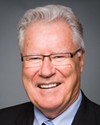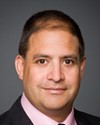Fifty plus one.
Evidence of meeting #32 for Indigenous and Northern Affairs in the 41st Parliament, 1st session. (The original version is on Parliament’s site, as are the minutes.) The winning word was fnpo.
A recording is available from Parliament.
Evidence of meeting #32 for Indigenous and Northern Affairs in the 41st Parliament, 1st session. (The original version is on Parliament’s site, as are the minutes.) The winning word was fnpo.
A recording is available from Parliament.
Chief Commissioner and Chief Executive Officer, First Nations Tax Commission
Yes.
Liberal
Chief Commissioner and Chief Executive Officer, First Nations Tax Commission
It's going to be a clear majority.
Liberal

Carolyn Bennett Liberal St. Paul's, ON
I think the debate is not fifty plus one. That's an unclear majority for a lot of people.
As for the budget and explorations in terms of the future possibility of an act, who would do those consultations?
Chief Commissioner and Chief Executive Officer, First Nations Tax Commission
It would be the proponent first nations and the federal government.
Liberal

Carolyn Bennett Liberal St. Paul's, ON
So consultants? What resources are needed to be able to carry that—?
Chief Commissioner and Chief Executive Officer, First Nations Tax Commission
In order to get to the stage we're at right now, it's taken a long time. This didn't just happen yesterday or on March 28. What we started to do, first, was to make a decision that this is something that we needed to do. This came about because of the work I've done over the years. I was an adviser for two different Auditors General, looking at developed housing on reserves and finding out that most of the homes built on a reserve are disposable—lasting on average seven years. How do you deal with that? There are housing backlogs, repairs that need to be done, all of those things, and it all led to the conclusion that we have to do this.
I dealt with Sheila...not Sheila—what's her name?
Chief Commissioner and Chief Executive Officer, First Nations Tax Commission
No, it wasn't Sheila. There was Sheila Fraser, but it was the lady from London.
She was parliamentary secretary. It was Sue Barnes.
Sue was pursuing the matrimonial real property, and I was saying to her, as well as to Bob Nault and Ron Irwin—I was having these kinds of discussions back in those days—that if you build matrimonial real property on the Indian Act, you're building it on sand, because you just aren't going to have the certainty of land tenure if you're going to do it simply on the Indian Act.
The people who are impacted are women and children, so out of all of that we started to look at a series of studies. One of them was to determine whether this could be done under the constitution, because people were saying it couldn't be done.
So, yes, it can be done under the constitution. What are the economic benefits of doing this? A number of studies led to the conclusion that this is possible and that these are the economic benefits. Then we worked with the finance standing committee over a period of a number of years. Massimo was one of the individuals I was dealing with within the Liberal Party. I also met with Mr. Martin, Michael Ignatieff, Bob, and the whole range of people. The finance standing committee said we should explore this, and that led to an agreement.
They visited Kamloops and visited with the proponent communities, which led to that being included in the recommendations from the finance standing committee. The next steps are to begin to actually draft the legislation and to introduce it into the House.
Conservative

The Chair Conservative Chris Warkentin
Thank you.
Thank you, Ms. Bennett.
Mr. Boughen, you have seven minutes.
Conservative

Ray Boughen Conservative Palliser, SK
Thank you, Chair.
Welcome, Clarence, to our committee and thank you very much for taking time to be with us today, because we appreciate your knowledge and your willingness to share that with us.
I'm looking at the first nations property ownership idea that we've looked at here and there, and off and on, in our study.
As you view it, would there be a change of landscape in terms of land tenure on reserves? Do you see a big change there in terms of people owning the land?
Chief Commissioner and Chief Executive Officer, First Nations Tax Commission
As far as I'm concerned, it would be a game changer.
I visit lots of communities in my capacity as commissioner, and most communities I visit have a 10-year waiting list for housing. Most of the communities that have third-party management have it as a direct result of individuals not paying their mortgage on reserve lands, and it's because they end up with no equity at the end of it.
This changes that.
This allows an individual who is “mortgageable”, who has a steady job, and who has a good credit rating to go to the bank of his choice and get a mortgage the same way any other Canadian would.
One of the aspects I didn't talk about was the ability to be bonded. A lot of the communities that are now acting as proponents of the proposal are saying they want to be bonded so they can have businesses that get contracts, whether they be for road building, construction, or working in the mining industry, which a lot of the communities are moving towards now. So bonding is another aspect.
There is the passing on of wealth. People are saying we have property rights on reserve now, but my brother died intestate in 2010, and guess who looked after his estate? It was the Department of Indian Affairs, the owners of the land, not his family.
That changes this.
It empowers the individual to begin to think creatively, to become more productive, and to be part of the local, regional, provincial, national, and therefore, global economy. Right now we're not a stakeholder in that.
Conservative

Ray Boughen Conservative Palliser, SK
Which first nation communities do you believe would benefit most from this proposal and why? And are there any first nations that would likely not benefit?
Chief Commissioner and Chief Executive Officer, First Nations Tax Commission
I would go back to Attawapiskat. In the last year, you had lots of controversy over that particular community, and visits by Charlie Angus—the MP and apparently a Juno-award winner—and the MPP both saying this community should have property rights so that they can have mortgages.
My understanding is that they have an agreement with De Beers that created the potential for 500 jobs. They've only been able to take advantage of 200. They have 100 people working in the mine who could go to the bank and be mortgaged. That would lessen the housing needs of, by my estimates, at least 100 people.
Initially, the communities that go forward are going to be small in numbers, because we're still operating under an oral tradition. First Nations have to be able to hear, they have to be able to see the results, and they're very conservative. They don't want to move away from what they're already familiar with.
The only status people aware of what life is like without the Indian Act are the Nisga'a, for 10 years, and Tsawwassen. All the others, like my father—his grandfather would have been born before the Indian Act, but that's a few generations now.
And that breaks that cycle of dependence.
You will also, I believe, get more transparency and accountability from our governments because individuals will want to make sure that investment happens on our lands and that there is no squandering of our meagre resources. There's going to be an overall benefit for all first nations and for all Canadians, ultimately.
Conservative

The Chair Conservative Chris Warkentin
Thank you.
There's just a little bit more time. Did anybody have a follow-up question?
Mr. Clarke, go ahead
Conservative

Rob Clarke Conservative Desnethé—Missinippi—Churchill River, SK
With your vision…. If it were enacted today, what do you think the timeframe would be to implement the whole process?
Chief Commissioner and Chief Executive Officer, First Nations Tax Commission
As you can tell, I'm an optimist—
Conservative
Chief Commissioner and Chief Executive Officer, First Nations Tax Commission
—but also a realist.
I've been doing this now for 38 years, as I have said. Legislation usually takes, on average, about seven years from its inception to its passage. I've been involved in several pieces of legislation already.
Because of the policy announcement in the budget, I look forward to working with the proponent first nations over the summer, and having legislation ready for introduction into the House hopefully this fall. And then having that referred to this committee for this study, and then going through the process with the committee with any particular amendments or changes required to make the legislation work better. Then it's back to the House, and then over to the Senate to go through their processes.
I'd love to see that happen before December 21 this year, before the world ends.
Chief Commissioner and Chief Executive Officer, First Nations Tax Commission
The other piece that is critically important is the parallel process in which we're going to have to engage with the provincial governments. In order to make this happen, we have to have provincial buy-in. A lot of first nations feel—and you heard it over and over again on January 24—that they have the crown in the room, when, in fact, they don't.
You have the indefeasible crown, which is the federal government and the provincial government. Both are stakeholders in this. It took me a while to learn what a federation was all about. I learned that through sitting on a committee with Mr. Rae for six years called the Forum of Federations.
I witnessed Bill Clinton talk about federalism in Mont Tremblant. The message that he brought was that we are a family, and that all members of the family have to begin to work together. It's like a democracy. A democracy just doesn't simply mean one person, one vote. It's more than that. We have to begin to bring first nations into this family and be productive in a way that is unrealized yet. We were once a fundamental part of the economy.
I'll be having discussions with the provincial governments over the summer. I've already had a number of discussions with British Columbia, Manitoba, Ontario, and New Brunswick. I look forward to a number of the other provinces that will come forward. Saskatchewan has indicated that it quite likes the idea, but doesn't want to move ahead of the first nation proponents.
We've gone past the point where the federal government has to find solutions for us. It's the first nations that have to do it. At the same time, there have to be processes for the individual first nation communities. That is already starting to happen at the local level. We're engaging and having discussions with them. I'm probably looking at 2014.
Conservative

The Chair Conservative Chris Warkentin
Thank you, Mr. Jules.
We'll turn to Mr. Genest-Jourdain for five minutes.
NDP

Jonathan Genest-Jourdain NDP Manicouagan, QC
Mr. Jules, when you talked about the First Nations Property Ownership Act, one specific notion caught my attention—that of seizure capacity.
I would like to know if you have determined the incidence of emission, by provincial courts, of writs of seizure—garnishee summons or writs of execution—and the possibility of judicial land seizures for nations that, of course, adhere to those principles.